Rubber: Properties and Uses
Rubber is a versatile material with unique properties that make it useful in a wide range of applications. It is a type of elastomer, which means it can return to its original shape after being stretched or deformed. Here are some key points to understand about rubber:
Composition of Rubber
Rubber is made from the latex of certain plants, such as the rubber tree (Hevea brasiliensis), or from synthetic materials derived from petrochemicals. The latex is processed to remove impurities and then vulcanized, a process that involves adding sulfur to improve its strength and elasticity.
Properties of Rubber
- Elasticity: Rubber can stretch and return to its original shape, making it ideal for applications where flexibility is required.
- Insulation: Rubber is a good insulator of electricity and heat, which makes it valuable in electrical and thermal insulation applications.
- Resilience: Rubber has the ability to absorb and disperse energy, making it useful in shock absorption and cushioning.
- Water Resistance: Rubber is often resistant to water and other liquids, making it suitable for use in seals and gaskets.
- Chemical Resistance: Depending on the type of rubber, it can exhibit resistance to various chemicals, making it suitable for use in chemical processing equipment.
Uses of Rubber
Rubber is used in a wide variety of products and industries, including:
- Tires for vehicles
- Footwear, including shoes and boots
- Industrial hoses and conveyor belts
- Seals and gaskets for machinery and equipment
- Insulation for electrical wiring and cables
- Medical and healthcare products, such as gloves and tubing
Study Guide
Here are some key points to remember about rubber:
- What is rubber made from?
- What is vulcanization and why is it important in rubber production?
- List and explain four important properties of rubber.
- Provide examples of at least three different uses of rubber.
[Rubber] Related Worksheets and Study Guides:
.◂Science Worksheets and Study Guides Sixth Grade. Solids, liquids and gases
Study Guide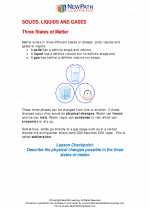 Solids, liquids and gases
Solids, liquids and gases  Activity Lesson
Activity Lesson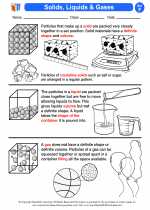 Solids, Liquids & Gases
Solids, Liquids & Gases  Worksheet/Answer key
Worksheet/Answer key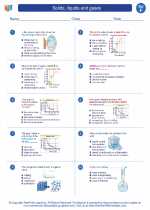 Solids, liquids and gases
Solids, liquids and gases  Worksheet/Answer key
Worksheet/Answer key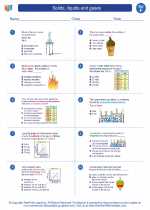 Solids, liquids and gases
Solids, liquids and gases  Worksheet/Answer key
Worksheet/Answer key Solids, liquids and gases
Solids, liquids and gases  Vocabulary/Answer key
Vocabulary/Answer key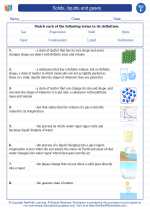 Solids, liquids and gases
Solids, liquids and gases  Vocabulary/Answer key
Vocabulary/Answer key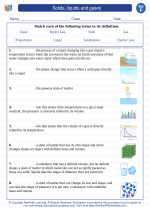 Solids, liquids and gases
Solids, liquids and gases 

 Activity Lesson
Activity Lesson
 Worksheet/Answer key
Worksheet/Answer key
 Worksheet/Answer key
Worksheet/Answer key
 Worksheet/Answer key
Worksheet/Answer key
 Vocabulary/Answer key
Vocabulary/Answer key
 Vocabulary/Answer key
Vocabulary/Answer key

The resources above cover the following skills:
PHYSICAL SCIENCE
Energy
Students who demonstrate understanding can:
Plan an investigation to determine the relationships among the energy transferred, the type of matter, the mass, and the change in the average kinetic energy of the particles as measured by the temperature of the sample.